ARCI is tracking 11 Swallow-tailed Kites with GPS-equipped transmitters. Six of these kites are veteran contributors in our ongoing tracking research, having produced at least two years of tracking data. The other five were tagged newly tagged during the 2021 nesting season (see our previous blogs about the kites we tagged on Sanibel and in South Carolina). Migration is in full swing, and we have A LOT to share with you as these birds start their southbound trip to South America for the austral summer.
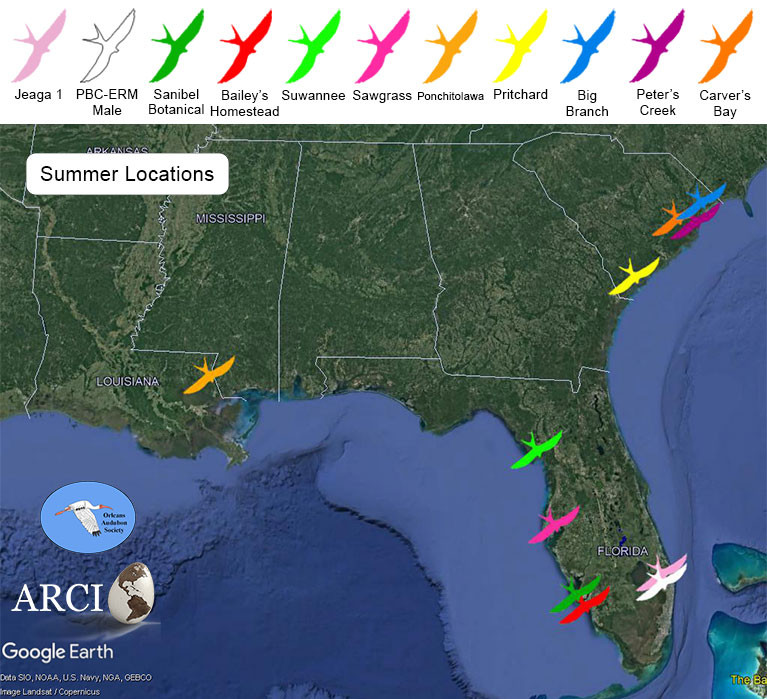
A quick spoiler alert: SIX of the 11 kites have made it to Central America safely after crossing the Gulf of Mexico!
First to go was a female named Jeaga #1 tagged in Palm Beach County, Florida. She stayed near her nesting area for most of her pre-migration preparation until moving on 7 August to the west side of Lake Okeechobee and crossing the Gulf of Mexico on 11 August direct to Cancún, Mexico. Jaega #1 has since has been stopping over in the forested landscape around Cobá, Mexico.
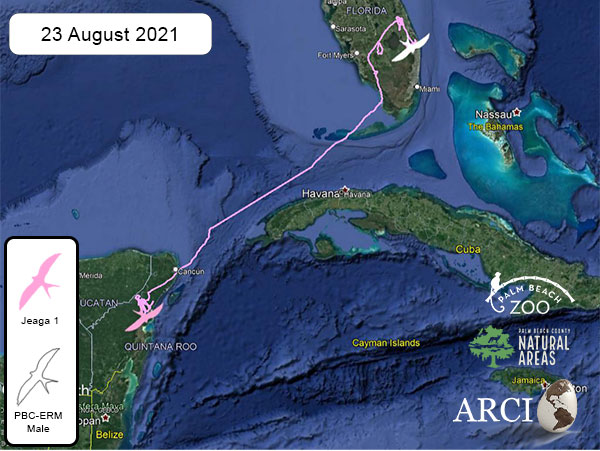
Our two newly tagged Sanibel kites were the next to go. Both spent a month inland in Glades County, Florida, before leaving the country. Bailey’s Homestead (male) left on 9 August and spent a night in Cuba before crossing the Yucatan Channel to Quintana Roo, Mexico. Sanibel Botanical (female) left one day later after returning from two short flights offshore. We are guessing that she encountered headwinds soon after making these false starts and returning to land, something we have not previously observed by any of the kites we have tracked. Sanibel Botanical currently is stopping over in Quintana Roo, Mexico.
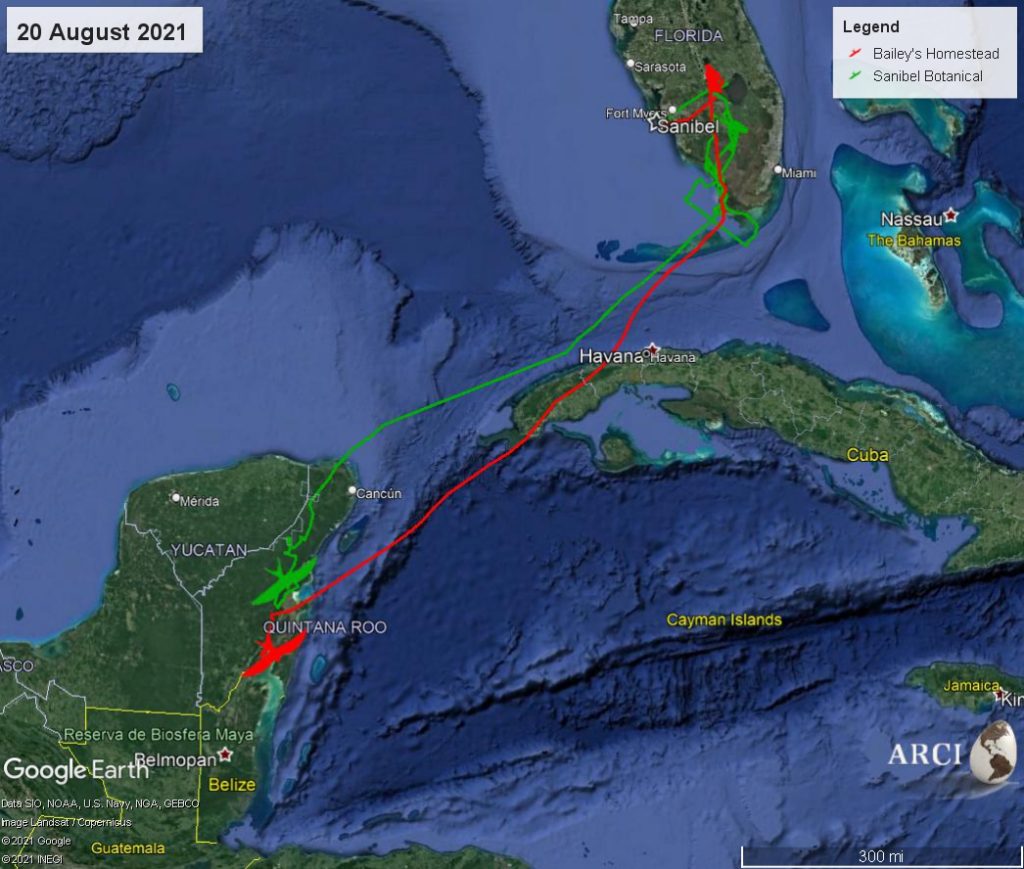
Suwannee (male) from Dixie County, Florida, moved fast down the state and departed from the Charlotte Harbor Preserve State Park on 11 August. He traveled quickly through the Yucatán Peninsula and is now in Nicaragua, the farthest south of any of our tracked Swallow-tailed Kites.
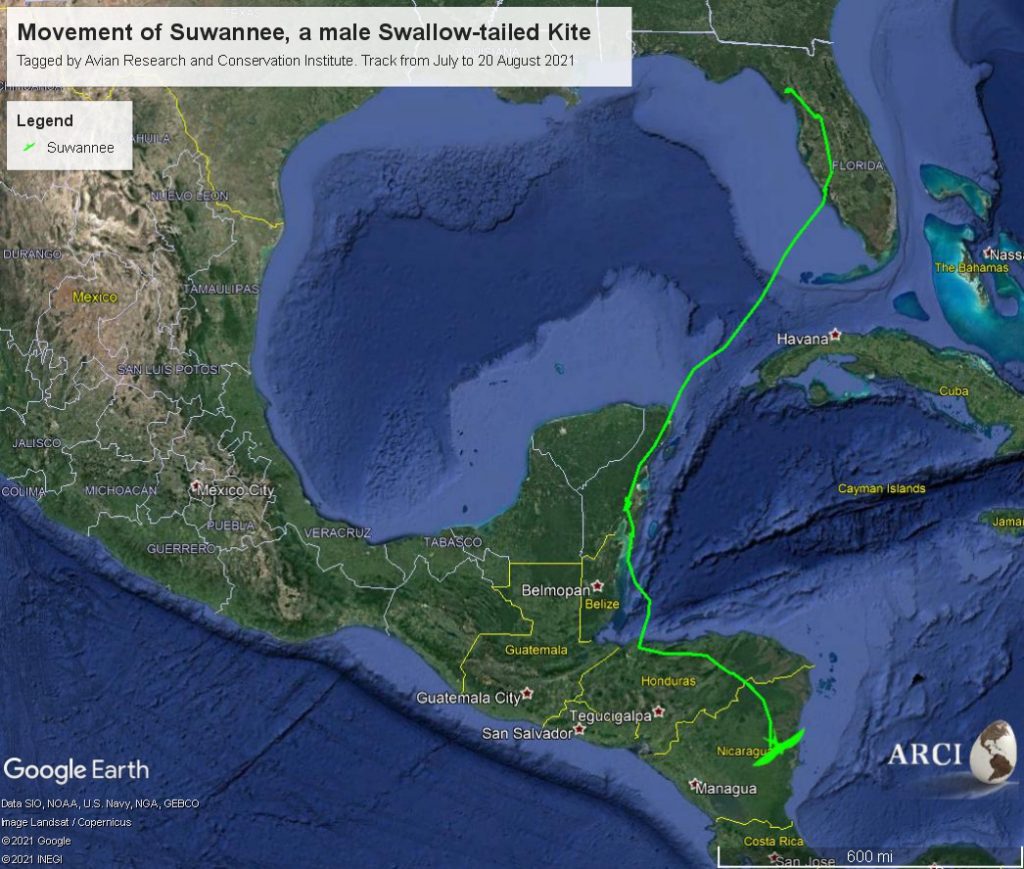
We are awaiting data uploads from two female kites recently tagged with tagged in South Carolina. Big Branch, who spent a few weeks in northeast Florida before continuing south on 12 August, last reported from southwestern Florida, near Immokalee. Carvers Bay’s last location was 12 August in the Green Swamp, Citrus County, Florida.
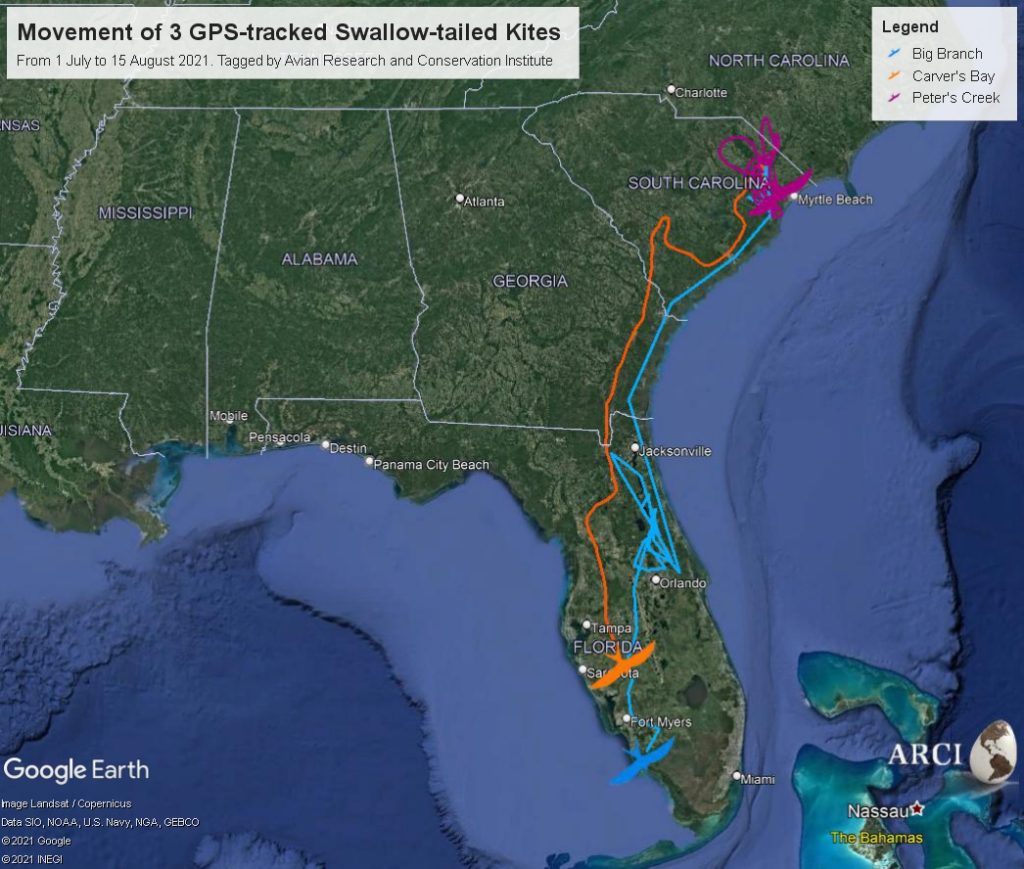
Most of the tagged kites birds that are still in their nesting areas are males: Peter’s Creek and Pritchard in South Carolina, Ponchitolawa in Louisiana (tagged by colleague Dr. Jennifer Coulson) and PBC-ERM Male in Palm Beach County. Sawgrass (female), tagged in June of 2016, is the longest-tracked kite we are currently following. Her and PBC-ERM male’s transmitters are showing their age and not producing as many GPS locations or uploads as in the past. We are hopeful both birds are OK and that we will continue to get enough data from them to continue following their journey. Sawgrass was last recorded near Jacksonville on 7 August and PBC-ERM Male was in Palm Beach County on 8 August.
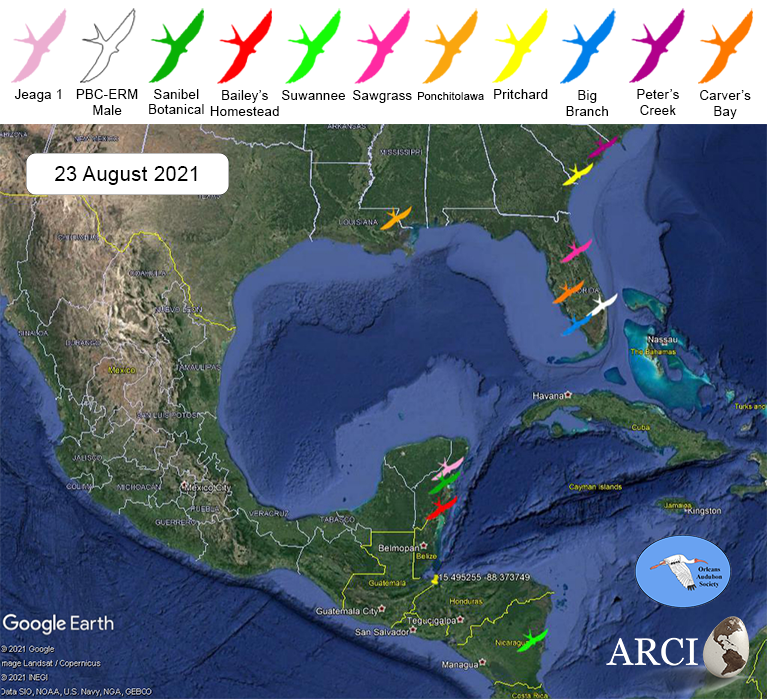
More Swallow-tailed Kites will be making the Gulf of Mexico crossing soon. This is a risky feat for a migratory bird. May they find the strongest of tailwinds to get them to the Yucatán Peninsula.
This work would not be possible without our dedicated supporters and collaborators. For our current 11 GPS-tracked Swallow-tailed Kites we thank:
American Bird Conservancy (ABC)
bioGraphic
CROW – Clinic for the Rehabilitation of Wildlife, Inc.
Florida Panther National Wildlife Refuge
Forest Investment Associates (FIA)
Friends of Florida Panther National Wildlife Refuge
Friends of Palmetto Bluff Conservancy
Friends of the Lower Suwannee & Cedar Keys National Wildlife Refuges
International Paper (IP)
Lower Suwannee National Wildlife Refuge
National Audubon Society
Orleans Audubon Society
Palm Beach County Department of Environmental Resources Management
Palm Beach Zoo and Conservation Society
Palmetto Bluff Conservancy
Resource Management Service (RMS)
Sanibel-Captiva Audubon Society
Sanibel-Captiva Conservation Foundation SCCF
St. Augustine Alligator Farm Zoological Park
St. Petersburg Audubon Society
The Avian Reconditioning Center for Birds of Prey
White Oak Forest Management

Absolutely amazing! Thank you for sharing this info and there journey! I hope to see a documentary show on Disney + some day! I am also fascinated by the little Whippor will birds but I’ve never seen one in the wild or captive!
Sandy, the whipperwill is in South Eastern Kentucky. As children we mocked them, bringing them in to within range of seeing them.
I still get chills when I hear them.
This is so fantastic! I marvel at the Swallow-tailed Kite when I see them in Everglades City, FL!
Getting to see their fight path makes one appreciate just what incredible birds they truly are!
Many thanks to all involved for sharing this tracking and data adventure with us!
How long is the flight, Jaega 1 for example, across the Gulf? How long do they fly without stopping for fuel?
Many thanks for tracking…simply amazing.
What happened to Jax? Didn’t see any info for the migration North or anything since last year.
Amazing stories to be told for each one of these beautiful birds.
will be sharing with family tonight at the dinner table.
I live in northeast Georgia and saw my first Swallo-tailed kites in Banks County in 2020. I was lucky to have about six of them visit my neighbors pasture in 2021 and got some great photos. This year 2022 I have seen four groups and seen reports of a couple more in the area. Their migration is definitely changing.